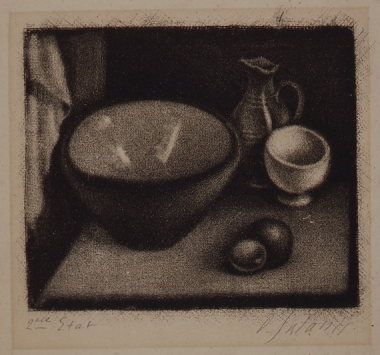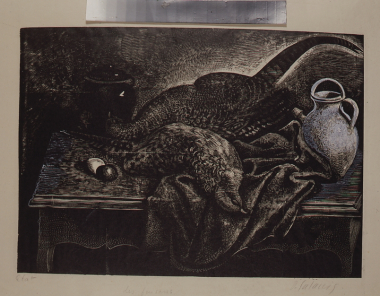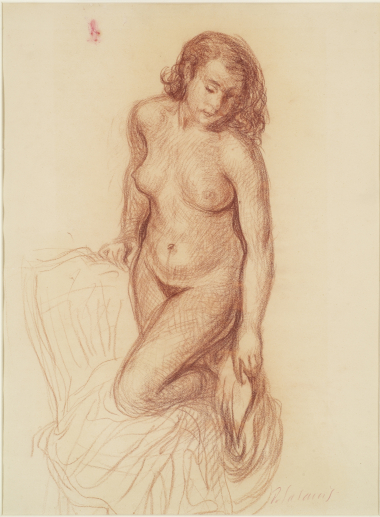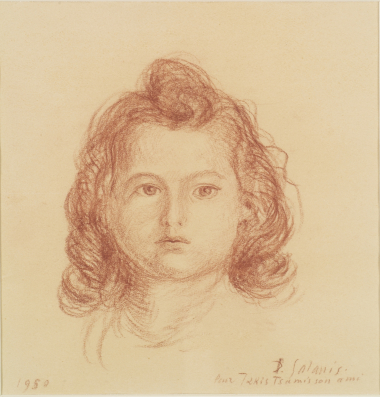Dimitris Galanis was an engraver, and one of the pioneers of the form in the Greek art world. From a very young age, he expressed interest in music, mathematics and drawing, and began to publish cartoons in newspapers and magazines while still a teenager. He studied for two years at the School of Civil Engineering of the Athens Technical University (1897-1899) while also taking drawing lessons from Nikiforos Lytras (1899). He then settled in Paris in 1900, where he spent the greater part of his life, occasionally travelling to various countries in Europe and to Greece. Up until 1902, he studied at the School of Fine Arts under Fernand Cormon, and from 1901 to 1912, he worked with popular humour publications, such as Frou-Frou, Le Rire, Le Sourire, L’Assiette au Beurre and others, publishing comics and drawings.
His persistent interest in engraving must have surfaced on a trip to Germany (1907-1909), and in 1918, he began to illustrate books. This activity constituted a significant part of his artistic creation and produced more than 100 books, albums, calendars and art publications. In 1930, he stopped drawing altogether and devoted himself exclusively to engraving. Having obtained French citizenship, he taught at the André Lhote Academy (1925-1928), in his own studio (1930-1937) he taught Greek artists studying in Paris, and also taught at the School of Fine Arts (1945-1952). In 1945, he was elected to the French Academy and in 1950, he was made a corresponding member of the Academy of Athens.
By the 1920s, Galanis had mastered woodcuts and began to experiment further with engraving techniques in copper. Compositions he had carved in wood in the previous decade smoothly transitioned into the method of etching and fixing the engraving with acid. He exhibited extensively, both in France and other countries, and in 1922 presented his first solo exhibition in Paris, where André Malraux delivered the opening remarks. He also took part in the Parisian salons, and from 1920 to 1926, he was included in group shows with some of the most important artists of the day, including Picasso, Matisse, Braque, Chagall and Derain, with whom he was close friends. In 1991, his work was presented in a retrospective exhibition at the Museum of Contemporary Art-Basil and Elise Goulandris Foundation in Andros.
Galanis often transposed his paintings to engravings: in the early years, it was the geometrical still lifes, and later it was the rounded female forms and landscapes. The portrait of his son, Jean, as a child was made from a similar drawing dated from 1914 and is one of Galanis’ most popular works. Its prominent characteristic is the intense emotional quality which allows for the presence of cubist features in the composition.









